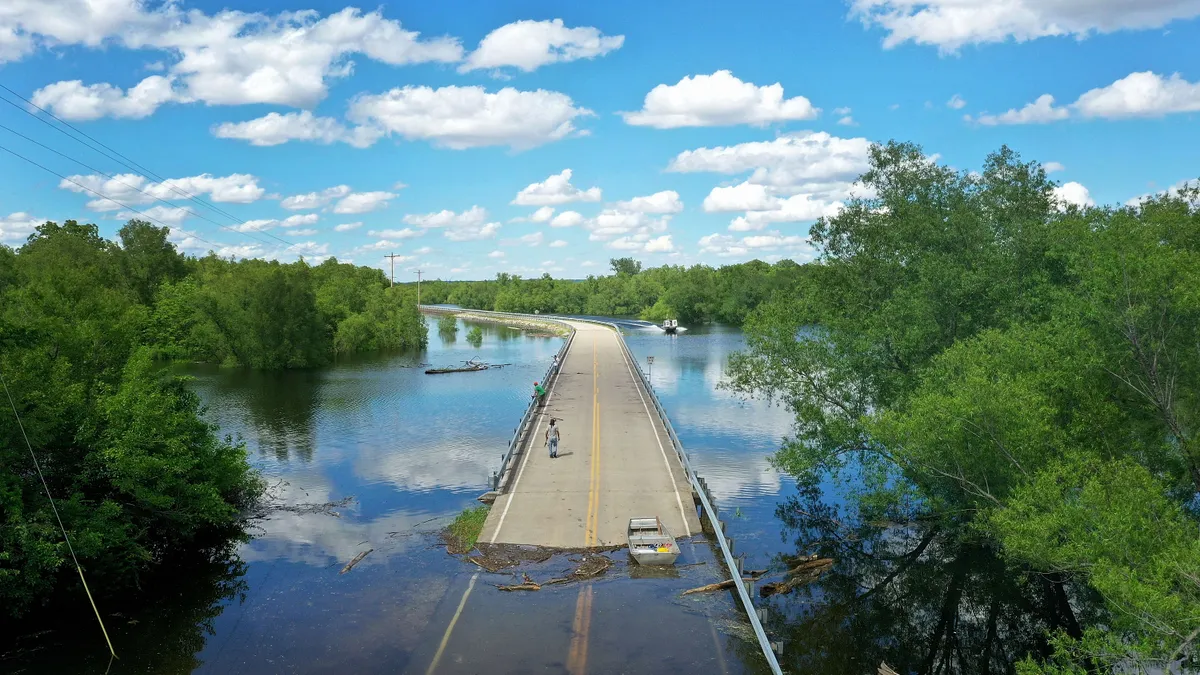A federal grant program for building community resilience against natural disasters continues to distribute funds unevenly across the U.S., according to an analysis published this month by nonprofit research group Headwaters Economics.
East Coast and West Coast states received 78% of this year’s funding disbursed by the Federal Emergency Management Agency through its Building Resilient Infrastructure and Communities grant program. This year’s grants, which went to 124 projects, total nearly $2.3 billion.
The analysis defines "high-capacity" communities as those that already have more resources, particularly key local government positions and expertise. High-capacity, larger cities tend to be the most successful at securing funding through the complicated and time-consuming BRIC application process. This year — the third for the grant program — states with more high-capacity communities were more likely to successfully secure grant funding.
These disparities are a problem because it means the program — FEMA’s “premiere source” of disaster resilience and climate adaptation funding — is not reaching many lower-capacity and rural communities that face natural disaster risk, said Kristin Smith, a researcher at Headwaters Economics.
“Throughout the Mississippi River basin, there’s tons of flooding,” she said. “Yet we’re not seeing as much of the BRIC funding go towards the interior as we see going to the coasts.” The Biden administration often focuses on equity as it relates to socioeconomic and demographic measures and vulnerability to disaster, Smith said, but she wants to focus some attention on the issue of local government capacity, “which is also an equity concern, but it’s not one that we always talk about.”
Smith does not think FEMA is failing at addressing equity; she believes different components of equity exist, “and not all of those equity dimensions, particularly the geographic ones, are being addressed.”
Addressing the disparity
Smith said that the question she keeps coming back to is, “If BRIC isn’t working for everyone, how are we going to make sure that those communities also have the resources they need to prepare for the future?”
The Headwaters Economics analysis points to two approaches: improve access to federal mitigation programs, including BRIC, and build local government capacity.
Smith recommended that the federal government simplify the application process to reduce administrative burden, reduce or waive requirements for communities to match grants with local funds and offer more technical assistance, potentially through partnerships with nonprofits and regional hubs. She also noted that FEMA could increase BRIC’s state allocations, which are buckets of money dedicated to each state for community projects. State allocations are still competitive, but they create smaller applicant pools within each state versus across the entire country.
“All of a sudden, those little applications [from communities] that might not have the really slick grant-writing abilities of New York City can actually still get the money because they’re competing at the state level,” Smith said. FEMA has already increased state allocations from $678,000 per state in its first year to $2 million per state this year.
To build local capacity, Smith recommends that the federal government increase funding to FEMA programs and regional organizations that bolster low-capacity governments. She also questioned whether the competitive grant model is the ideal way to disburse natural disaster and climate resilience funds.
“I would argue that there are many different ways to distribute money, some of which are just direct allocations to local governments,” Smith said. “And we should be exploring different ways of making sure that communities have the resources they need.”
She acknowledged the argument that competitive grants, in theory, direct resources in the most efficient way possible to the best projects, weed out projects that are a poor use of taxpayer money and foster innovation.
“Sometimes, though, projects that decrease risk and save people’s lives aren’t really innovative,” Smith said. “Sometimes they’re just necessary.”












